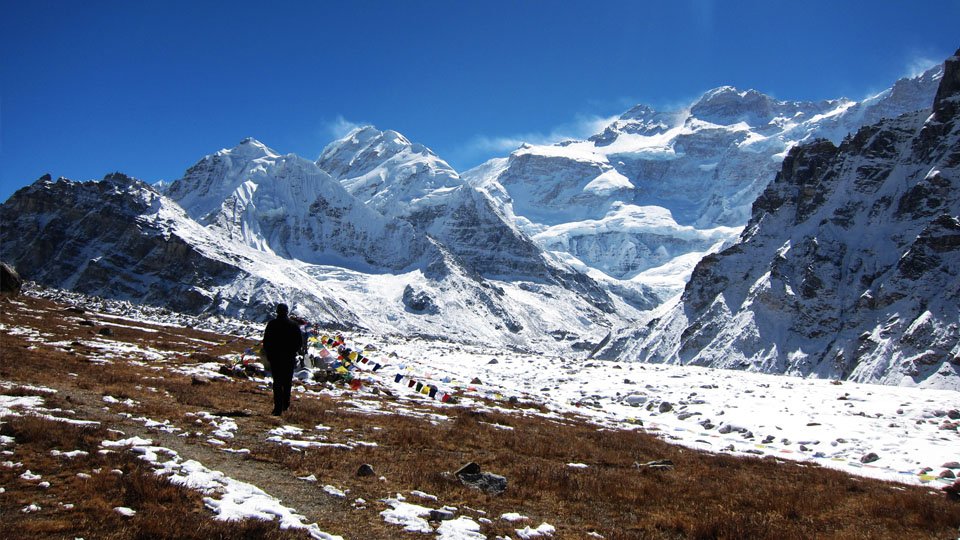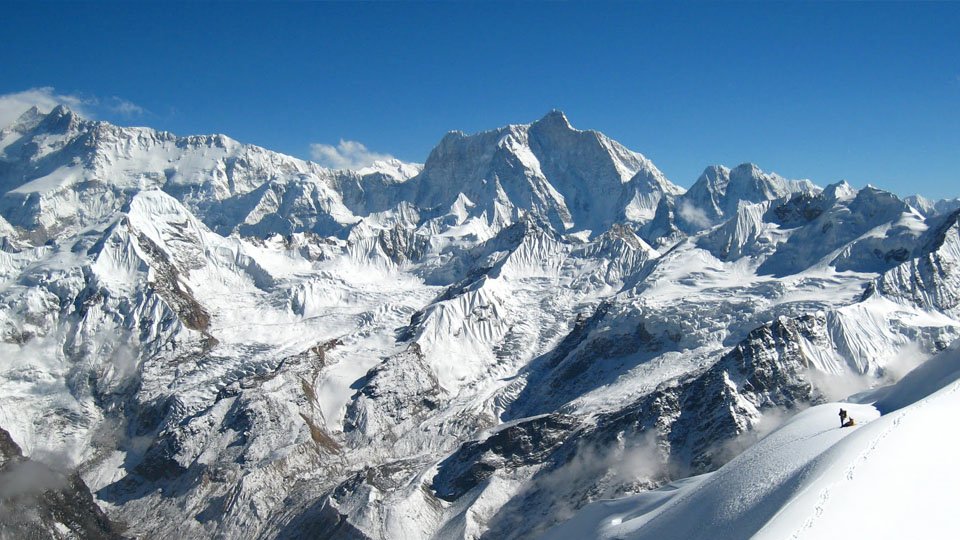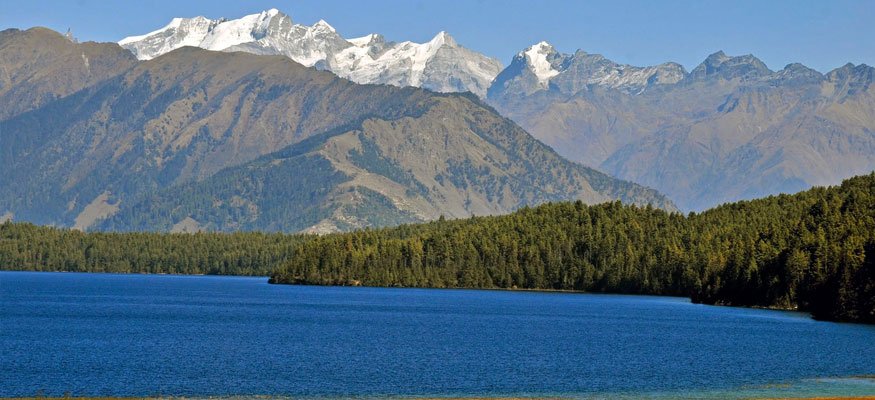Kanchenjunga Base Camp trek is less crowded but interesting trekking in Nepal. Mount Kanchenjunga (8,586 m) is the world’s third highest mountain in the world lies in eastern part of Nepal. Kanchenjunga Base Camp trekking area is protected under the Kanchenjunga Conservation Area, managed by local communities in partnership with WWF.
Highlights of Kanchenjunga Base Camp Trekking
- Less Crowded trekking route
- Ethnic Nepalese culture
- Great views of Mountains
- Wilderness nature experience
Overview
Kanchenjunga Base Camp Trek is the part of great Himalayan Trails in eastern Nepal. It takes you to the base camp of world’s third highest mountain peak named Mount Kanchenjunga (8586m). The meaning of Kanchenjunga in Nepali language stands for crystal clear.
Kanchenjunga also known as the “Five Treasures of the Great Snow” i.e. Gold, Sliver, Precious Stones, Grain and Holy Scriptures. It is located in Nepal and India border to the north-east of India. Mount Kanchenjunga is possible seen from Nepal, India, Tibet and Bhutan. The major part of the mountain lies in Nepal.
Kanchenjunga Base Camp Trekking Information:
Kanchenjunga Base Camp trekking starts from Kathmandu after flying to Tumlingtar Aiport. The trekking route of Kanchenjunga passes through the beautiful Aurn Valley which is rich in natural beauty and cultural heritage. The area is protected under the Kanchenjunga Conversation Area. The total area of Kanchenjunga Conservation Area 2035 square kilometers. Kanchejunga base camp trekking route passes by many villages, farm lands, and jungle and high hills.
Flora and Fauna in Kanchenjunga
Kanchenjunga area is the home to many flora and fauna. There are many kinds of wildlife including Red Panda, Himalayan black bear, musk deer, snow leopard, wild boar and many others. There are many kinds of rare and endangered animals to see. There are various alpine grasslands to sub-tropical forests, low river valley, glacial moraine, and rocky scree slopes. Alpine vegetation of different kinds of flowers and trees are found. Many Himalayan birds, reptiles and small creatures available in these area.
Himalayan Views and Cultural Experience
Kanchenjunga Base Camp trekking offers the stunning views of great mountain peaks such as Everest (8848m), Lhotse (8516m), Kanchenjunga (8586m), Makalu (8481m), and many others. Similarly there are many high hills and peaks to see for great views of Himalayas and landscape of hills.
The eastern part of Nepal is inhabited by mixed of community of Rai, Limbu, Gurung and Sherpa. The Kanchenjunga region offers unique culture and lifestyle of ethnic people of Nepal. Kanchenjunga Base Camp trekking package is full of cultural heritages. The area still protects the traditional culture and lifestyle of real Nepal. You will experience the live heritage of Nepalese life.
Best Time for Kanchenjunga Base Camp Trekking
Trek to the base camp of Kanchenjunga is best in spring and autumn season. Spring season offers the great views of Himalayas with colorful flowers and vegetation all around the hills. Spring season falls under the months of March, April and May. Another best time to visit Nepal is autumn season. Autumn season fall under the months of September, October and November. Trekking in monsoon is not recommended because of heavily rain and steeply trekking trails. Trekking in winter season is also difficult one.
Who Can Do Kanchenjunga Base Camp Trek?
The trekking route is longer than two weeks in wilderness area of Nepal. So trekkers who want to do this trekking needs to be physically fit and having previous experience is the basis requirement for the trekking. It’s not much has altitude sickness problem but needs long days walking of 6 to 8 hours a day.
Outline Itinerary
| Day | Program | Elevation |
|---|---|---|
| 1 | Arrival to TIA airport. Pick up from there then check in to hotel in Kathmandu Upon arrival in Kathmandu. | 1440m |
| 2 | Kathmandu to Biratnagar flight and drive to Hille | 1800m |
| 3 | Hille – Shidua | |
| 4 | Shidua – Door Pani | 2780m |
| 5 | Door Pani – Gupa Pokhari | 2890m |
| 6 |
Gupa Pokhari – Nesum
|
|
| 7 | Nesum – Taplejung | 1442m |
| 8 | Taplejung – Chirwa | 1190m |
| 9 | Chirwa – Sakathum | 1640m |
| 10 | Sakathum-Amjilossa | 2490m |
| 11 | Amjilossa – Gyabla / kyapar | 2730m |
| 12 | Kyapar – Ghunsa | 3410m |
| 13 | Ghunsa –Khambachen | 4150m |
| 14 | Acclimatization day in Khambachen | |
| 15 | Khambachen–Lhonak | 4790m |
| 16 | Lhonak trip to Pangpema | 5140m |
| 17 | Pangpema to Khambachen and to the Passes | |
| 18 | Rest day in High Pass | |
| 19 | High Camp –Ramche | 4620m |
| 20 | Ramche – Tseram | 3810m |
| 21 | Tseram – Torontham | 2990m |
| 22 | Torontham – Yamphudin | 1960m |
| 23 | Yamphudin – Phumphe | 1780m |
| 24 | Phumphe – Phawa Khola | |
| 25 | Phawa Khola – Taplejung | 1442m |
| 26 | Taplejung – Kathmandu | 1440m |
| 27 | Final Departure |





